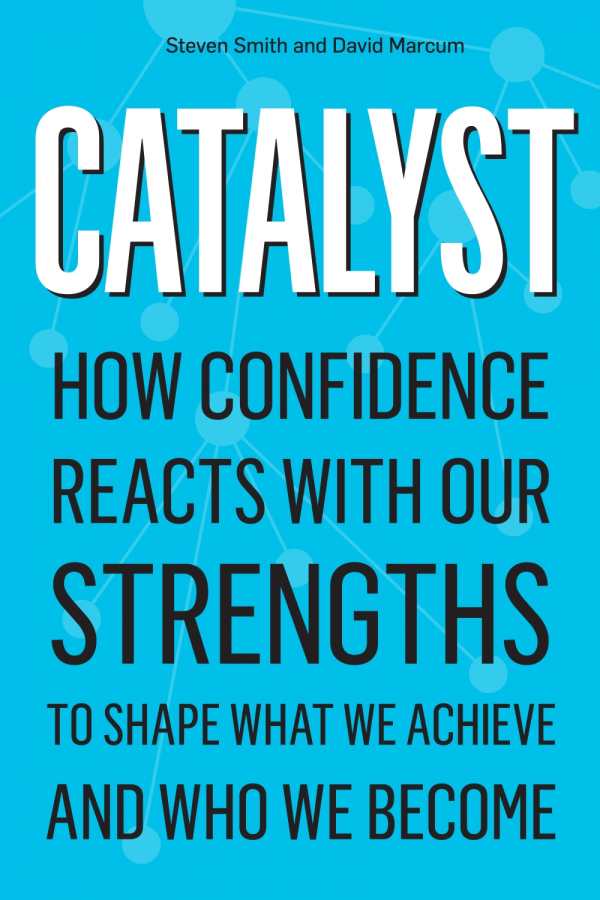
Catalyst
How Confidence Reacts with Our Strengths to Shape What We Achieve and Who We Become
The suggestions are concise, realistic, and accurate and, with practice, would strengthen anyone’s confidence.
Confidence doesn’t always come with strength, but Catalyst, Steven Smith and David Marcum’s slim and efficient work on the subject, offers myriad ways to understand and remember strengths with the mantra, “I’m brilliant, and I’m not.” The phrase helps maintain a sense of humble practicality that allows for growth.
Catalyst is divided into three parts. The authors begin by describing the difference between competence and confidence in order to establish a strong definition of confidence. They suggest ways to develop traits complementary to strengths while maintaining a focus on group-oriented outcomes that will reinforce confidence most. Finally, the third part of the book looks at warning signs for flagging confidence.
In addition to useful, on-the-ground suggestions for improving confidence in the face of adversity, the authors provide a thorough appendix of many other warning signs with suggestions for strengthening confidence before it flounders.
Smith has a background in psychology and management, and operates a company that fosters career growth in young professionals. The company and this book are the fruits of many years of study of the relationship between personal strengths and confidence. The book’s design is clean and parsimonious, a perfect conduit for the structure and style, which is straightforward. The book is both quick to read and offers details that are quick to reference and implement. The format is a “living” book, available as an e-book, which will be added to and revised as new research is compiled. This makes the book an exciting one to keep as a reference going forward.
The writing is engaging, with a chatty style full of anecdotes alongside kind-hearted yet no-nonsense detail. There is a fascinating study in which women were paired and then separated. They then described to a forensic sketch artist their own appearance and the appearance of the woman they’d just met. “In each case, the portrayal directed by someone else was not only more beautiful, but far more accurate of each woman’s true physical appearance.” This underscores flaws in self-assessment and confidence and offers a salient jumping-off point for the authors’ work in the book.
The authors set out to describe what confidence is and how it impacts our success at work and in life. They are successful by offering not only a clear definition of the terms but also useful suggestions to strengthen confidence in adversity. In one example, they suggest that feeling defensive indicates an imbalance between overconfidence and no confidence, and to remedy that, one should separate identity from ideas, and to remember that being wrong once doesn’t make you wrong about everything.
The suggestions are concise, realistic, and accurate and, with practice, would strengthen or keep in check anyone’s confidence. It’s a rare book that tackles this universal subject and empowers readers with tactics that make building confidence plausible.
Reviewed by
Natasha Gilmore
Disclosure: This article is not an endorsement, but a review. The publisher of this book provided free copies of the book and paid a small fee to have their book reviewed by a professional reviewer. Foreword Reviews and Clarion Reviews make no guarantee that the publisher will receive a positive review. Foreword Magazine, Inc. is disclosing this in accordance with the Federal Trade Commission’s 16 CFR, Part 255.
